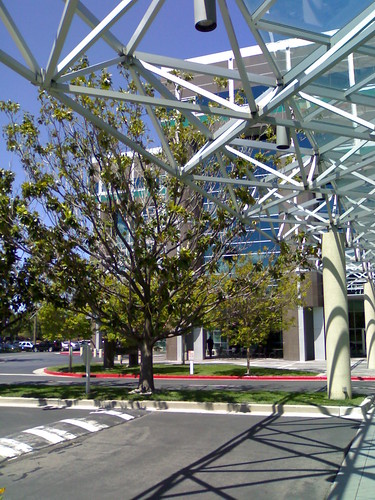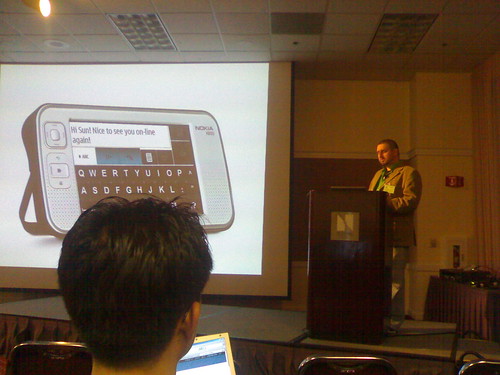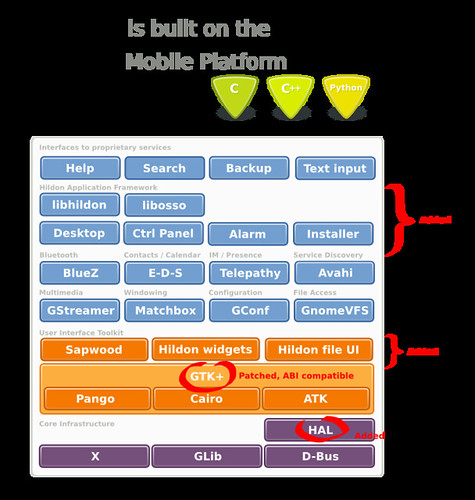Two weeks off, one week out
From http://www.notacloud.com/blog/?p=32
Posted on 2007-04-30 11:25:41 UTC.
Last Monday evening I got back after three weeks out of the office.
These were two fairly uneventful (but very much needed) weeks off spent with the family and then a week out to attend ELC 2007.
The inevitable pile of email, unresolved problems and high priority issues was as expected waiting for me ![]()
But also many things have been moving along nicely. One good example is the number of presentations around Maemo, the Internet Tablets and mobile/embedded that have been accepted for this year’s GUADEC.
Going to ELC
On my way to ELC, I had planned to stay one day in London visiting Matthew Allum.
I was set to arrive at 09:00 and fully enjoy an extraordinarily warm and sunny Saturday.
I suppose that couldn’t happen just like that. And it didn’t. My flight got delayed 5 hours due to a failure in the plane’s hydraulic system. So with nearly perfect weather in both Helsinki and London I ended up spending half of the day in the airport ![]() .
.
Somehow when I end up stranded in airports I tend to meet interesting people. This time it was a gentleman from the UK returning from a trip to sell his Internet PR company - an interesting concept - and an Australian executive with a paint company recently acquired by a bigger Finnish firm. The latter claimed extensive previous experience in the travel industry and assured me that despite the best efforts of the engineers a plane just repaired would be significantly more likely to malfunction ![]()
I did make it safe and sound to London eventually, in time to still enjoy a few hours of light in London, a pleasant walk in the woods and a nice dinner at the Allums’.
ELC
It was my first time at ELC. There were good and interesting talks even if the overall activity and energy level in the conference is not quite the same in a GUADEC or FOSDEM.
Many presentations can be found here already.
Thomas Gleixner’s keynote (Embedded Linux - An Increasing Nightmare) painted a picture of missed opportunities and disconnectedness in the use of the Linux Kernel in embedded devices. When it comes to working with upstream, the Maemo and Internet Tablets efforts are in comparatively quite good shape. I’m quite in tune with one of the comments to the article in LWN that points to the tension between short-term drawbacks and long-term benefits and the need for management buy-in.
Looking back two years ago when we revealed Maemo and the Nokia 770 I can contrast the initial overriding short-term focus on getting the first product out that resulted among other things in a rather large patch to Gtk+ with what followed - a longer term investment on connecting our development better to upstream, and folding back our patches. It really pays off if you can expect to continue making products with the same code base and release software updates.
Jonathan Corbet’s talks on the state of the Linux Kernel were good as well carrying important messages for an audience of industry embedded developers.
Robi Karp presented and demoed Fancy Pants. Very nicely done and a good example of what you can do with E17 stack though I can’t really get excited about proprietary UI building blocks.
Koen Kooi presented on Open Embedded. I haven’t followed OE too closely so an opportunity to contrast it with Maemo’s approach to development is always welcome and thought provoking.
Matt Mackall presented on System Wide Memory Profiling and demonstrated pagemap
There was a visit to the Tech Museum in San Jose which is definitely worth seeing. Among many other things there’s a bunch of robot demonstrators including one that will pick up and arrange blocks to form sentences and another that will sketch your picture based on a segmented black and white image.
And there was a demo session too. It was remarkable how many of the devices demonstrated where using Gtk+.
The GNOME Mobile and Embedded Initiative
That brings me to the GMAE initiative.
The announcement of the GNOME Mobile and Embedded initiative was for me the highlight of ELC and what brought Quim and me there in the first place.
Jeff Waugh did a great job with his presentation.
A discussion panel on GMAE followed in the afternoon with David Schlesinger (ACCESS), Jeff Waugh (GNOME), Matthew Allum (OpenedHand) and myself representing Nokia.
Bill Weinberg facilitated the discussion which turned out to be both stimulating and most enjoyable.
The online media picked up nicely on the announcement:
- Ars Technica
- Electronics Weekly
- InfoWorld
- Linux Devices
- Linux.com
- LWN
- Mad Penguin
- Mobile Linux Info
- Mobile Tech News
- Newsforge
- OSNews
- Softpedia
- UMPC Portal
Now it’s time to join the GMAE developers list.
There are good reasons to be excited about GMAE.
There’s an impressive list of organizations behind the initiative:
GNOME Foundation supporters ACCESS, Canonical, Debian, Igalia, Imendio, Intel, Nokia, OLPC, OpenedHand and Red Hat, and GMAE contributors CodeThink, Collabora, FIC, Fluendo, Kernel Concepts, Movial, Nomovok, Openismus, Vernier, Waugh Partners and Wolfson Microelectronics.
All of these have been active using and improving the GNOME platform for some time and working together in the context of the GNOME project.
What GMAE brings is the visibility to these efforts and the added emphasis on mobile and embedded devices - in the community and to other players considering GNOME for their devices.
I had not had the change to play with Vernier’s device before. It is really neat. I wish I had access to something like that when at high school ![]()
Also participating are Open Source projects such as Avahi, BlueZ, Cairo, GNOME, GPE, GStreamer, GTK+, Hildon, Maemo, Matchbox, OpenMoko, Telepathy and Tinymail; and industry organisations CELF, the Linux Foundation and LiPS.
These and other projects make up the GNOME Mobile Platform.
 GMAE stack
GMAE stack
Software stack in Internet Tablets
So much of the Maemo platform is covered in GMAE that it is now possible to draw a very simplified diagram of the software stack in Nokia’s Internet Tablets and to propose a (partial) definition for Maemo in terms of the software it covers.
Looking closer the picture is a bit more complex.
Intel, Mobile Internet devices and Hildon
While I was away, the news broke out at the Intel Developers Forum of Intel’s new reference platform for Mobile Internet Devices.
It is exciting to see Intel betting on Linux and GMAE for Internet-oriented mobile devices, in much the same way Nokia is.
Even more exciting, Intel is looking at the Hildon Application Framework for their reference platform.
We had the chance to meet Bob Spencer from Intel at ELC and to chat about the possibilities for collaboration on Hildon’s further development.
As Quim pointed out, this is an important step for Hildon.
OS 2007 / 770 hacker edition
Also while I was away, there has been renewed discussion in the mailing lists about the OS 2007 / 770 hacker edition.
I must confess I was slightly disappointed with the initial reaction to the first releases. There were words of support
and interest but (I thought) not too many active users. So the recent surge of interest and the total number of downloads
has somehow surprised me (and others).
The reports of people for whom the hacker edition works better than OS 2006 are very interesting as well.
Well, that should teach me not to correlate too strongly traffic in the mailing lists with real interest ![]()
Stay tuned, things will start moving again







